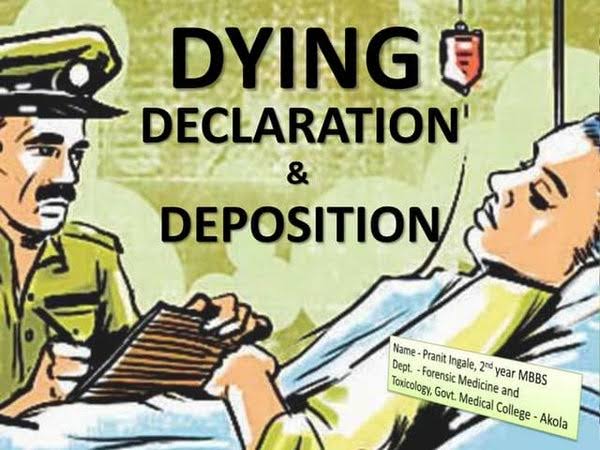@JUDGMENTTAG-ORDER
K. Chandru, J.@mdashThe Petitioner has filed both the writ petitions, challenging the order passed u/s 45A of the ESI Act dated 03.01.2007.By the order challenged in W.P. No. 4325 of 2007, the Respondent Employees'' State Insurance Corporation (ESIC) considered that the Petitioner is liable to pay subscription for the Diploma Trainees engaged by them. It is the stand of the ESIC that Section 2(9) of the ESI Act applies only to the Apprentices who are appointed in terms of the Apprentices, Act 1961 and not to others engaged by the Management on their own, whether in the name of Trainee or Apprentice. Disputing the same, the first writ petition was filed. The second writ petition was filed for the period subsequent to the period covered by the earlier notice.
2. Both the writ petitions were admitted on 08.02.2002. Pending the writ petition, this Court granted an interim stay. Though notice was served, the Respondent has not filed any counter affidavit till date.
3. The contention of the Petitioner was that the Standing Order certified in terms of the Petitioner''s establishment provides for engagement of Trainees. Therefore, Section 2(9) of the ESI Act is comprehensive enough to exclude all Trainees and the authorities were wrong in covering the Trainees engaged by the Petitioner company. Reliance was also placed upon a judgment of the Supreme Court reported in
4. Mere designation cannot decide the status of a person employed by an industrial establishment. Whether they were really Trainees engaged by them or they were engaged in the name of Trainees and work is extracted like a regular workman It is a factual dispute and that has to be decided only on factual basis. When an order is passed u/s 45A of the ESI Act, the only course open to the Employer is to have recourse to raise dispute u/s 75 of the ESI Act before the ESI Court .
5. This position of law has been clarified by the Supreme Court vide its judgment in
17. Prior to the incorporation of Section 45A under Act 44 of 1966, the only resort available to the Corporation was Section 75, for recovery of contribution through the court. Since this procedure was found to be impracticable and delayed process involved, a special provision was contemplated where under adjudication is to be made by the Corporation itself. By reason of incorporation of Section 45A with effect from 17-6-1967, it became possible for the Corporation to have determination of the question, binding on the principal employer, without resorting to the ESI Court. In regard to the order u/s 45A, the same is enforced, as envisaged u/s 45B, which was similarly brought into the Act, by which the contribution may be recovered as arrears of land revenue. With regard to the decision reached by the ESI Court in the application u/s 75, the said decision is enforced, as envisaged in Sub-section (4) of Section 75 as if it is a civil court. The mode of recovery u/s 45B of the Corporation and the mode of recovery as per Section 75(4) by the ESI Court as the civil court are entirely different as both Sections 45 and 75 operate in different spheres."
25. Section 45A of the Act contemplates a summary method to determine contribution in case of deliberate default on the part of the employer. By Amendment Act 29 of 1989, Sections 45C to 45I were inserted in the Principal Act, for the purpose of effecting recovery of arrears by attachment and sale of movable and immovable properties or establishment of the principal or immediate employer, without having recourse to law or the ESI Court. Therefore, it cannot be said that a proceeding for recovery as arrears of land revenue by issuing a certificate could be equated to either a suit, appeal or application in the court. u/s 68(2) and Sections 45C to 45I, after determination of contribution, recovery can be made straight away. If the employer disputes the correctness of the order u/s 45A, he could challenge the same u/s 75 of the Act before the ESI Court.
28. What Section 75(2) empowers is not only the recovery of the amounts due to the Corporation from the employer by recourse to the ESI Court, but also the settlement of the dispute of a claim by the corporation against the employer. While this is so, there is no impediment for the Corporation also to apply to the ESI Court to determine a dispute against an employer where it is satisfied that such a dispute exists. If there is no dispute in the determination either u/s 45A(1) or u/s 68, the Corporation can straightaway go for recovery of the arrears.
30. The legislature has provided for a special remedy to deal with special cases. The determination of the claim is left to the Corporation, which is based on the information available to it. It shows whether information is sufficient or not or the Corporation is able to get information from the employer or not, on the available records, the Corporation could determine the arrears. So, the non-availability of the records after five years, as per the Regulations, would not debar the Corporation to determine the amount of arrears. Therefore, if the provisions of Section 45A are read with Section 45B of the Act, then, the determination made by the Corporation is concerned. It may not be final so far as the employer is concerned, if he chooses to challenge it by filing an application u/s 75 of the Act. If the employer fails to challenge the said determination u/s 75 of the Act before the Court, then the determination u/s 45A becomes final against the employer as well. As such, there is no hurdle for recovery of the amount determined u/s 45B of the Act, by invoking the mode of recovery, as contemplated in Sections 45C to 45I.
31. In ESI Corpn. v. F. Fibre Bangalore (P) Ltd. it was observed that it is not necessary for the Corporation to seek a resolution of the dispute before the ESI Court, while the order was passed u/s 45A. Such a claim is recoverable as arrears of land revenue. If the employer disputes the claim, it is for him to move the ESI Court for relief. In other cases, other than cases where determination of the amount of contributions u/s 45A is made by the Corporation, if the claim is disputed by the employer, then, it may seek an adjudication of the dispute before the ESI Court, before enforcing recovery.
6. Though Mr. Sanjay Mohan, learned Counsel appearing for M/s. Ramasubramaiam and Associates pointed out that the Act has been amended by Central Act 18/10 and new Section 45AA has been inserted to provide for Appellate Authority against the order passed u/s 45A of the ESI Act, in the absence of any Appellate Authority being notified as on date and also the fact that the Petitioner''s case having been filed long before the amendment, the ESI Court constituted u/s 75 can determine the issue as directed by the Supreme Court.
7. In the light of the above, the writ petitions will stand dismissed. No costs. However, liberty is given to the Petitioner to move the appropriate Court. Consequently, connected miscellaneous petitions are closed.

